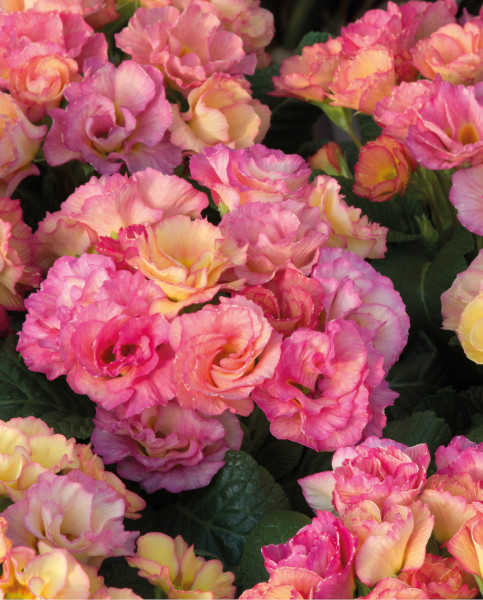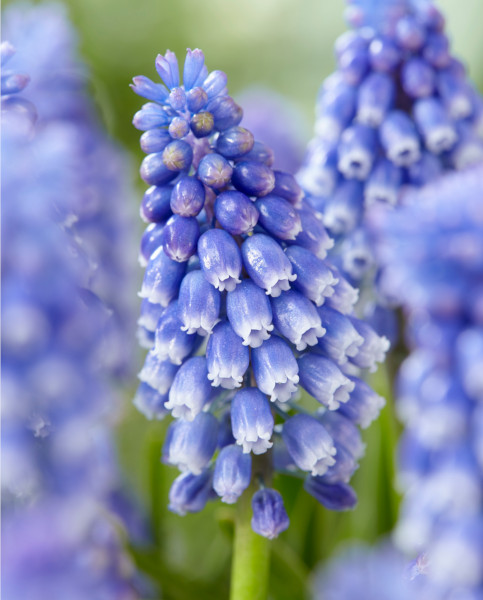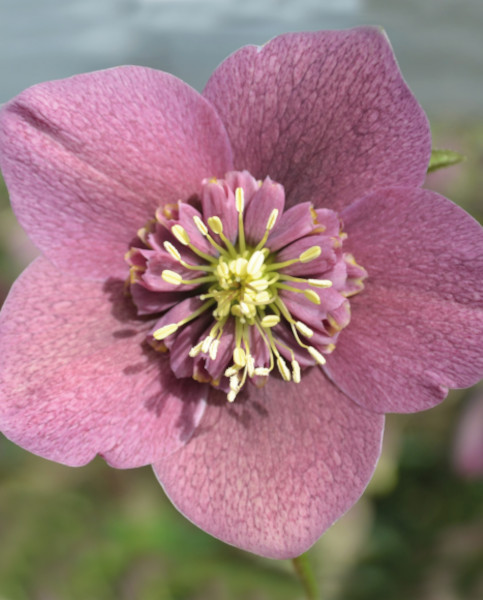How to grow Hyacinth
Hyacinths are one of the most highly perfumed bulbs you can grow. They come in a rainbow of striking bright colours and muted pastels which enhance any spring planting scheme and add something special to pot displays.
Plant the bulbs in autumn to bloom the following spring, or force specially prepared bulbs for earlier winter flowering. Indoor hyacinths will flower for a much shorter time.
Hyacinths make popular cut flowers for both their scent and beautiful, densely packed flower spikes, just a few blooms will fill a low vase and further fill the room with their fragrance. Cut Hyacinths when just a third of the blooms are open and they will last for over a week in cool water. Most Hyacinths reach about 25cm in height, so cut the stems right at the base for maximum stem length, but leave the foliage attached to the bulb.
All parts of Hyacinths can be a skin irritant due to their oxalic content, so if you have sensitive skin, you should wear gloves when planting bulbs or cutting the stems or wash your hands thoroughly after handling. The bulbs are also poisonous to pets so take care to keep them away from your furry friends.

Key Information
Soil pH
Position
Hardiness


Where & when to plant Hyacinths
Position- Full sun to part shade
Soil- Moist and well-drained
Flowering Period- Spring
Hardiness- Hardy
Hyacinth bulbs should be planted in autumn, ideally in September or October. This allows the bulbs to put down roots whilst the ground is still warm, followed by a long period of cold to slow down growth before they wake back up in spring to bloom.
A spot towards the front of the border where you can enjoy the scent of your Hyacinths is perfect and light shade will mean the blooms do not go over too quickly. Plant in groups or drifts for the best effect.
How to plant Hyacinths
The bulbs are deer and rabbit resistant and should be planted at a depth of 10cm deep and 15-20cm apart in moist, well-drained soil. Use a garden spade, trowel, or bulb-planter to create planting holes and add a layer of grit to the bottom to assist drainage. Place your bulbs in the ground and cover back over with soil before watering well. If you garden on poor soil or heavy clay, some leaf-mould mixed into the planting area will help with the nutrition and texture.
If you are growing Hyacinths in pots, use multi-purpose compost with added grit, or special bulb compost. You can also add some crocks to the bottom of the pot for extra drainage. The bulbs can be placed more closely together in pots, although not so close that they are touching. Grow simply by themselves or combine with other spring flowering bulbs. Add another layer of grit to the top of the compost after planting to keep slugs and snails from munching the emerging buds in spring.

What to plant with Hyacinths
Hyacinths look beautiful when woven into a tapestry of other spring flowering bulbs such as Narcissi, Tulips, Iris reticulata, and Fritillaria. They add a great mid-storey full of colour, texture and of course that unmistakeable scent.
We have a fabulous range of Hyacinths available at Hayloft, including some glorious collections – Hyacinth Retro Collection is a delightful mix of apricot Hyacinth Gipsy Queen, Hyacinth orientalis Purple Star and berry coloured Hyacinth Woodstock – beautiful in a large terracotta pot on your patio and welcoming next to a front door.
Try growing pure white Hyacinth Snow Crystal with white Narcissi Stainless and Tulip Green Star in a simple and elegant green and white planting scheme.
A set of pots or containers in different sizes such as our Stone Effect Planters Collection full of mixed spring bulbs creates a cheerful display. Combine different heights, colours, and textures for a long-lasting show.
Hellebores, Primulas, Pulmonarias, Anemones, Primroses, Dogs tooth violets, and Muscari all flower at a similar time and combine well with Hyacinths.
If you would like any further advice or planting ideas for your Hyacinths, our friendly and knowledgeable Customer Care Team at Hayloft will be more than happy to help if you give them a call.



How to care for Hyacinths
Pot grown Hyacinths should be watered regularly to ensure the soil does not dry out. Take care not to overwater the bulbs as this can cause them to rot. The bulbs can be planted out into beds and borders after flowering for the second year onwards as they will thrive better in the ground.
As Hyacinths are not tall flowers, they do not usually require any support.
You can deadhead the blooms to tidy the plants up after flowering but be sure to leave the foliage attached to the bulb. This will allow your Hyacinths to photosynthesise and store energy for next year’s flowers. Remove the foliage one it has turned brown to avoid the spread of fungal diseases. A liquid feed of high potash fertiliser such as tomato feed can be beneficial at the same time.
A mulch in autumn of leaf mould or homemade compost will feed the bulbs and ensure next year’s display. It will also suppress any weeds around your Hyacinths and help the soil to retain moisture.
Hyacinth flowers tend to get smaller and smaller each year, the stems less tightly packed with florets. It is therefore worth purchasing fresh bulbs every few years to ensure your displays are impactful. This is also a great opportunity to try new colours, combinations, and varieties.
Hyacinth bulbs will multiply naturally beneath the soil. The small new bulbs can be unearthed with a garden fork and replanted into other parts of the garden or pots to grow on; they will eventually flower although they will take several years to reach a decent size.
How to propagate Hyacinths
Hyacinths can be propagated by Division, Offsets or by Seed.
Division
Once the foliage has died back in late spring, after flowering, gently dig up the bulbs, being careful not to create any damage.
Gently seperate each bulb, ensuring that every division has a portion of both the base and some root system.
Plant these divisions straight away, into the ground or into containers, keeping them at the same level in the soil as they were originally. Each division should grow and flower the following season.
Offsets
Offsets are mini bulblets which you will see attached to the main bulb.
Gently twist to remove and plant at the same level into pots or containers. In 2 years these should be the same size flowering plant as their parent.
Seed
It can take up to 5 years to see a mature flowering plant. Remove seeds from spent flowers once they have dried out.
Sow into a seed tray of well-draining compost with added perlite and place in a cold frame or greenoyse, spraying with water to keep just moist. Slow to germinate, you should see a few leaves in the first year as the energy is used to develop the future bulb.
Common Hyacinth questions
Do all Hyacinth has the same scent?
Hyacinth are commonly used in perfume making, each colour flower has its own unique fragrance.
What is the lifespan of a Hyacinth?
A Hyacinth bulb will live for around 3-4 years. Each year the bulbs will decline in quality slightly, so many people treat them as annuals, pulling them up and planting new ones each year.
Are Hyacinths good for wildlife?
Hyacinth flowers attract plenty of pollinators, including bumblebees and butterflies with their bright colours. Often the only source of nectar in early spring, they are very welcome after a hard winter.




